Top 10 Data Labeling Tools for Machine Learning
Explore the top 10 data labeling tools revolutionizing AI workflows in 2024. Learn how these tools improve labeling efficiency, accuracy, and scalability.
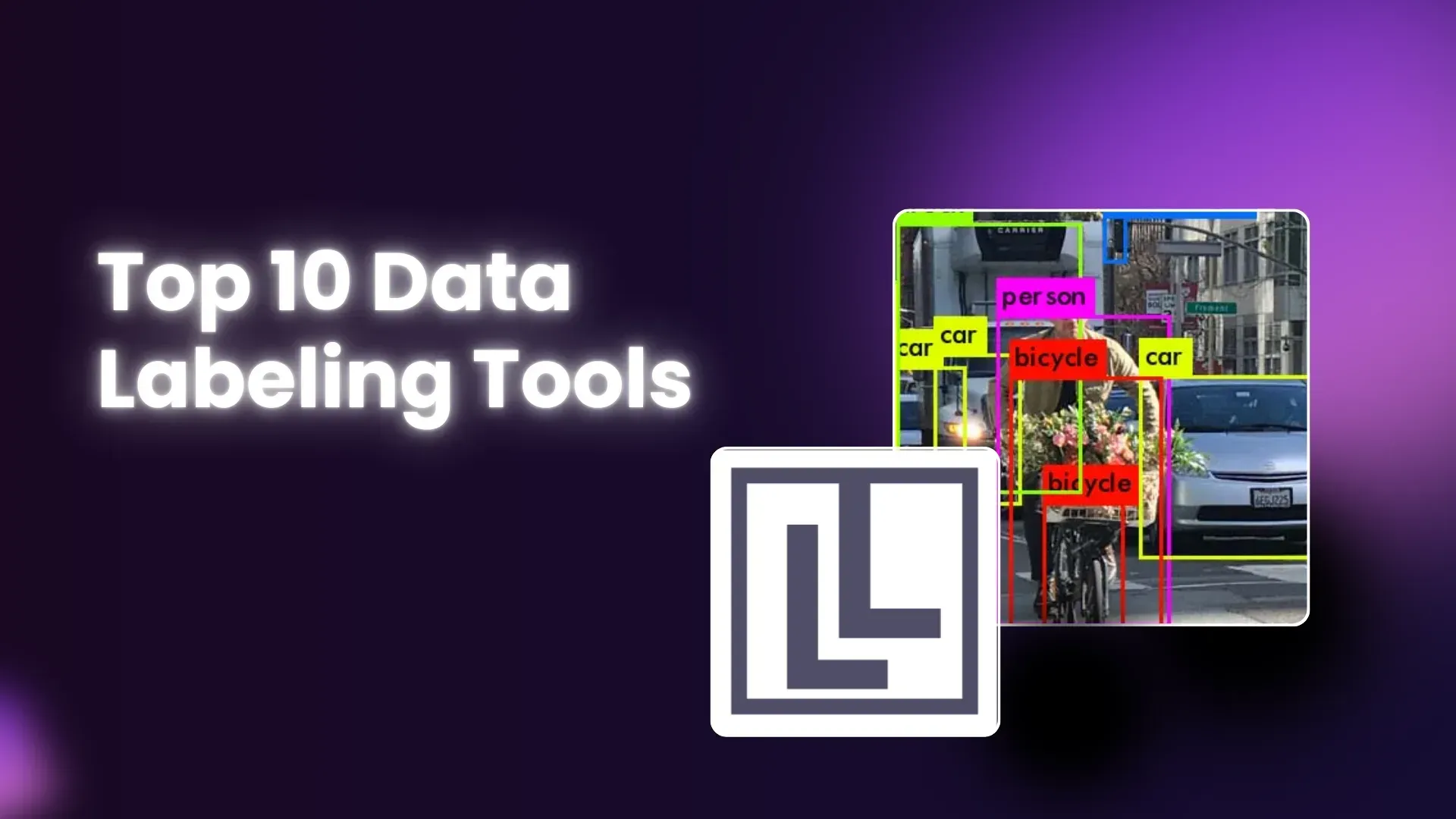
One of the biggest challenges faced by machine learning practitioners is the labor-intensive and time-consuming process of data labeling.
In fact, according to a 2024 report by Rand, up to 80% of AI project time is spent on data preparation and labeling, with companies allocating 25% to 50% of their total project budgets to labeling efforts.
This bottleneck often leads to project delays and compromised model performance due to mislabeled or incomplete datasets.
Choosing the right data labeling platform is critical for AI success. Labellerr's enterprise-grade data labeling platform reduces annotation time by up to 80% compared to manual methods. Our platform combines AI-assisted labeling with intuitive workflows to deliver faster, more accurate training datasets at a fraction of the cost.
Additionally, manual labeling can introduce inconsistencies and biases, significantly impacting the accuracy of machine learning models, particularly in applications like computer vision and natural language processing.
To solve this problem, data labeling tools offer automated and AI-assisted solutions. These tools not only streamline the labeling process but also ensure that high-quality, consistent data is provided for training models.
By leveraging these platforms, data labeling becomes faster, more scalable, and less error-prone, which directly contributes to improved model performance and faster time-to-market for AI solutions.
If you are a machine learning practitioners, data scientists, AI engineers, project managers, and businesses, looking to optimize their data labeling processes for faster and more accurate machine learning model development you can take a quick overview of the tools.
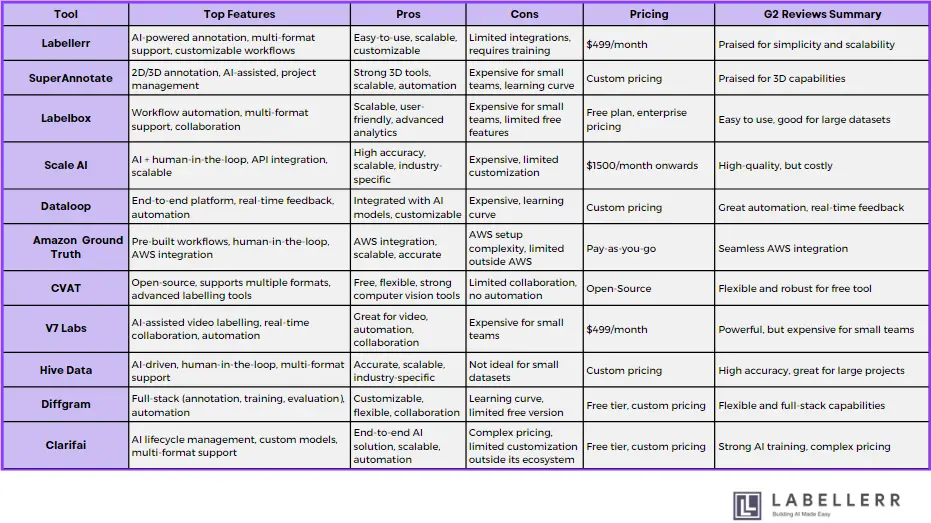
You might ask - "You gave me the list of best data labeling tools but I want to more, I want to know more about what exactly is data labeling?" Let's discuss that.
Why You Need a Robust Data Labeling Platform
A comprehensive data labeling platform does more than just annotation. The best platforms like Labellerr integrate:
- Labeling automation to reduce manual work by 75%
- Team collaboration features for consistent annotations
- Project management capabilities to track progress
- API access for seamless ML pipeline integration
- Custom workflows for your unique labeling needs
Without these features, your ML projects face delays, quality issues, and higher costs. Labellerr's data labeling platform provides all these capabilities in one affordable solution.
What is Data Labeling?
Data labeling is the process of tagging or annotating raw data, such as images, videos, audio, text, or 3D data, with meaningful labels to train machine learning (ML) models.
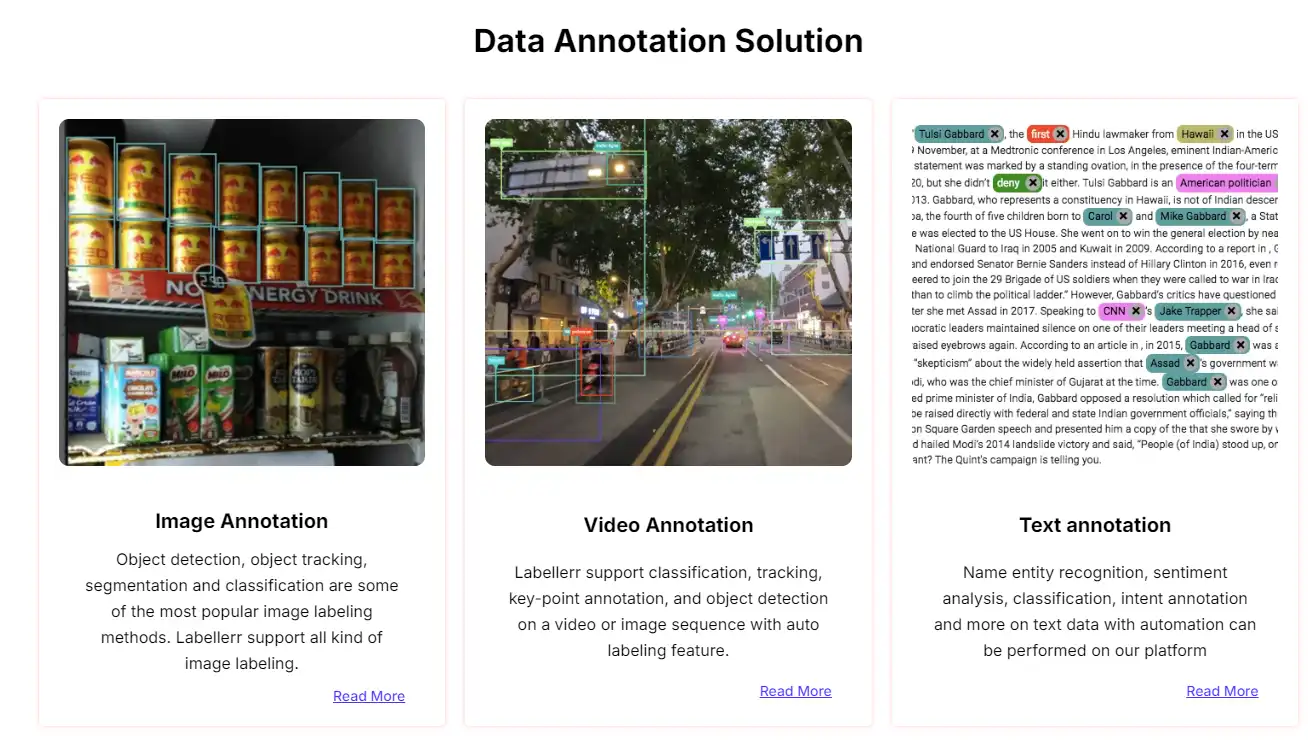
These labels provide context, making it easier for the ML algorithms to understand and recognize patterns.
For example, in computer vision, data labeling involves identifying objects in images and tagging them (e.g., labeling a car in a picture). It forms the foundation for supervised learning, where models learn by example from labeled data.
Importance of Data Labeling in Machine Learning
Accurate data labeling is critical for the performance of ML models. The quality of labeled data directly impacts how well the model can make predictions and generalize to new data.
Without high-quality, accurate labels, ML models may struggle to deliver precise outputs, whether they are used for image recognition, natural language processing (NLP), or autonomous driving systems.
Effective data labeling not only improves accuracy but also helps reduce bias, ensuring fair and reliable predictions across various use cases.
Here is the list of best data labeling tools you can use.
1. Labellerr
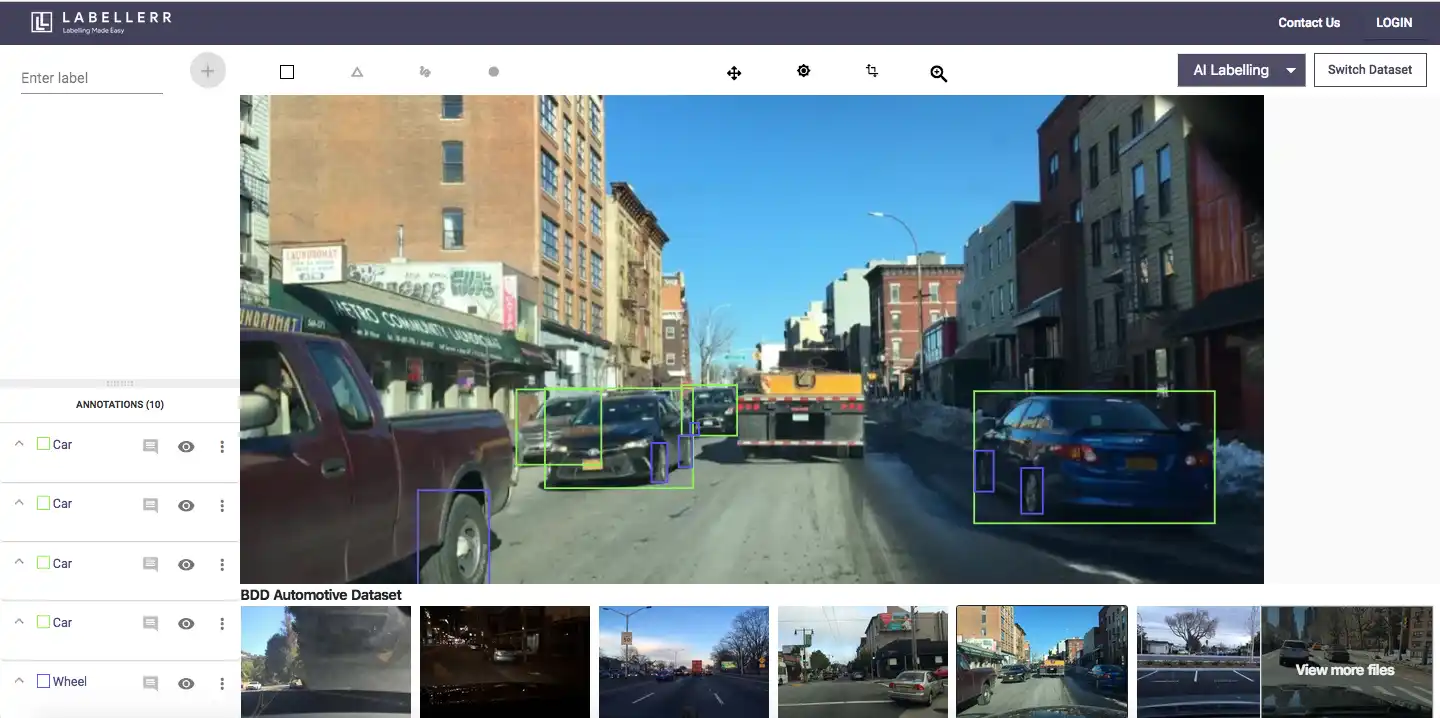
Top Features:
- AI-powered labeling that cuts annotation time by 80%
- Support for all data types (images, video, text, audio)
- Custom workflow builder with real-time quality checks
- Enterprise-grade security and user management
Pros:
- Easy-to-use interface
- Scalable for various projects
- Highly customizable
Cons:
- Limited integrations with other tools
- Requires initial training to maximize effectiveness
Pricing:
- Researcher Plan: You can use Labellerr for free, with up to 2,500 data credits and 1 seat.
- Pro Plan: $499/mo
- Enterprise Plan: Custom Pricing Contact Sales
Business Benefits:
- Reduce labeling costs by up to 60%
- Launch ML models 3x faster with higher accuracy
- Scale your labeling operations without adding headcount
- Pay only for what you use with flexible pricing
G2 Reviews Summary: Praised for its simplicity and scalability, making it suitable for diverse use cases.
2. SuperAnnotate
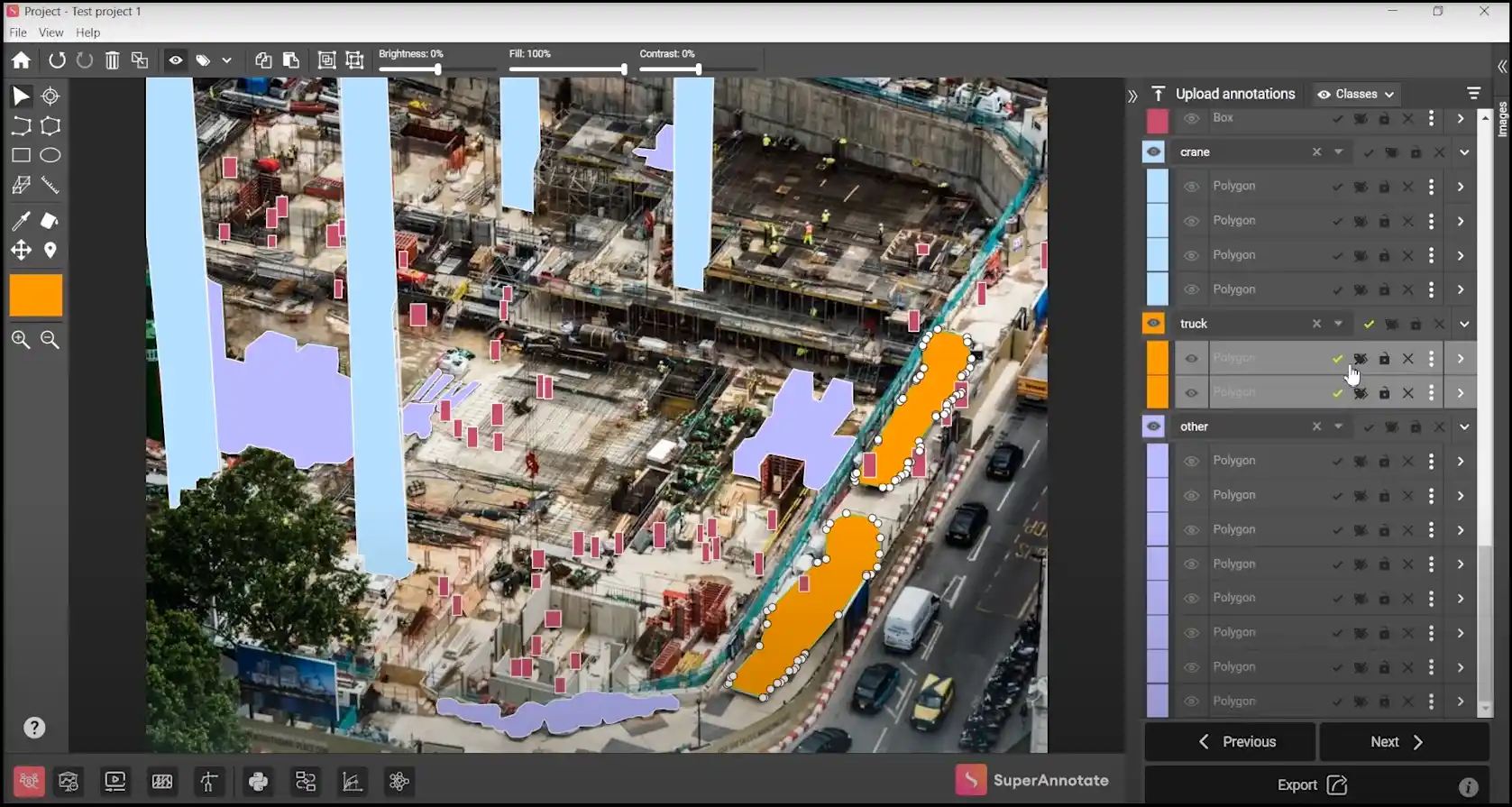
Top Features:
- 2D/3D annotation capabilities
- AI-assisted tools
- Project management features
Pros:
- Strong tools for 3D annotation
- Scalable for large teams
- Automation features available
Cons:
- Pricing can be steep for small teams
- Learning curve for new users
Pricing: Custom pricing available
G2 Reviews Summary: Users commend its advanced 3D capabilities.
3. Labelbox
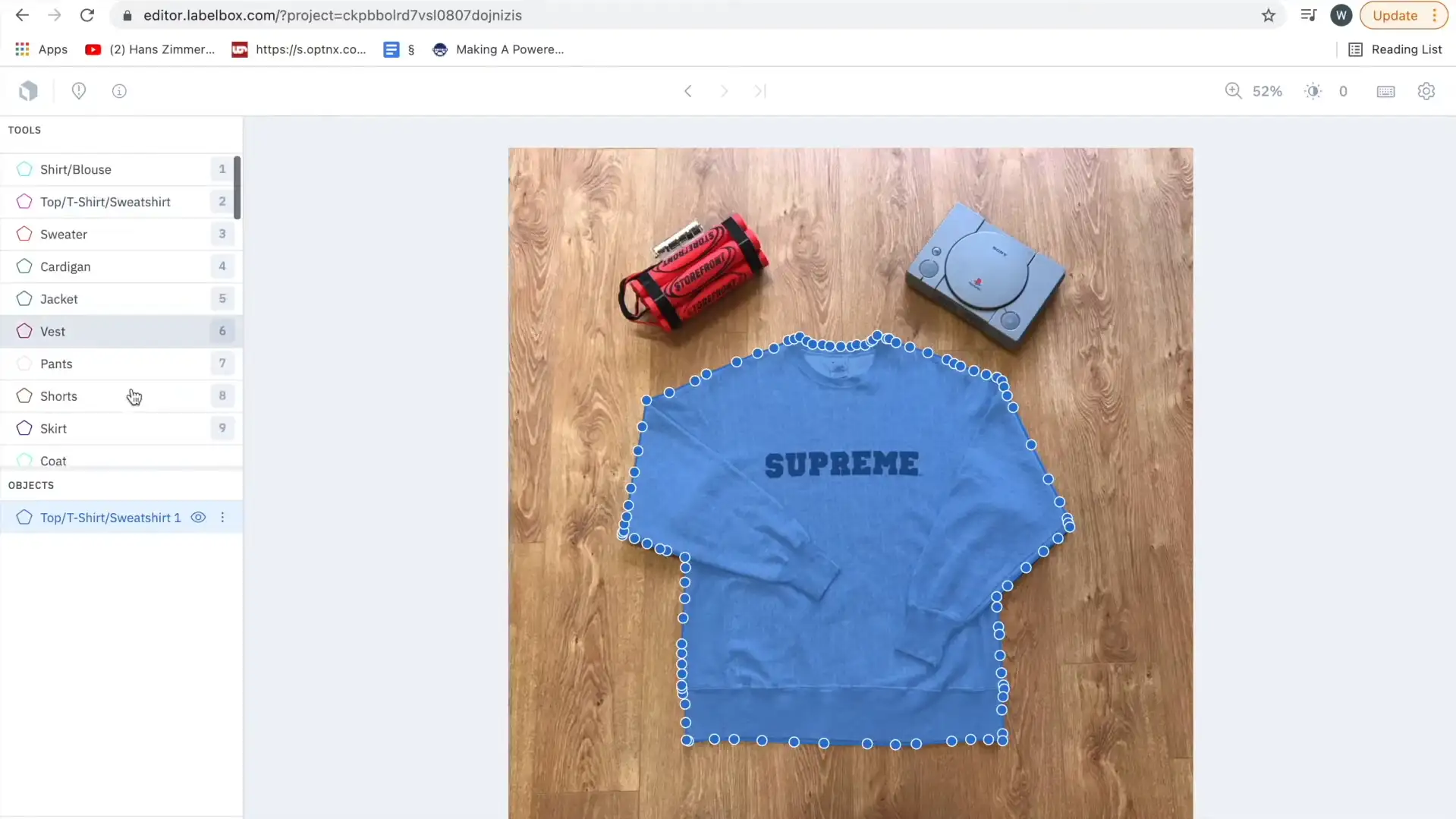
Top Features:
- Workflow automation
- Multi-format support
- Collaboration tools
Pros:
- Scalable and user-friendly
- Offers advanced analytics
Cons:
- Can be expensive for small teams
- Limited features in the free version
Pricing: Free plan available; enterprise pricing options
G2 Reviews Summary: Highly regarded for ease of use and efficiency with large datasets.
4. Scale AI
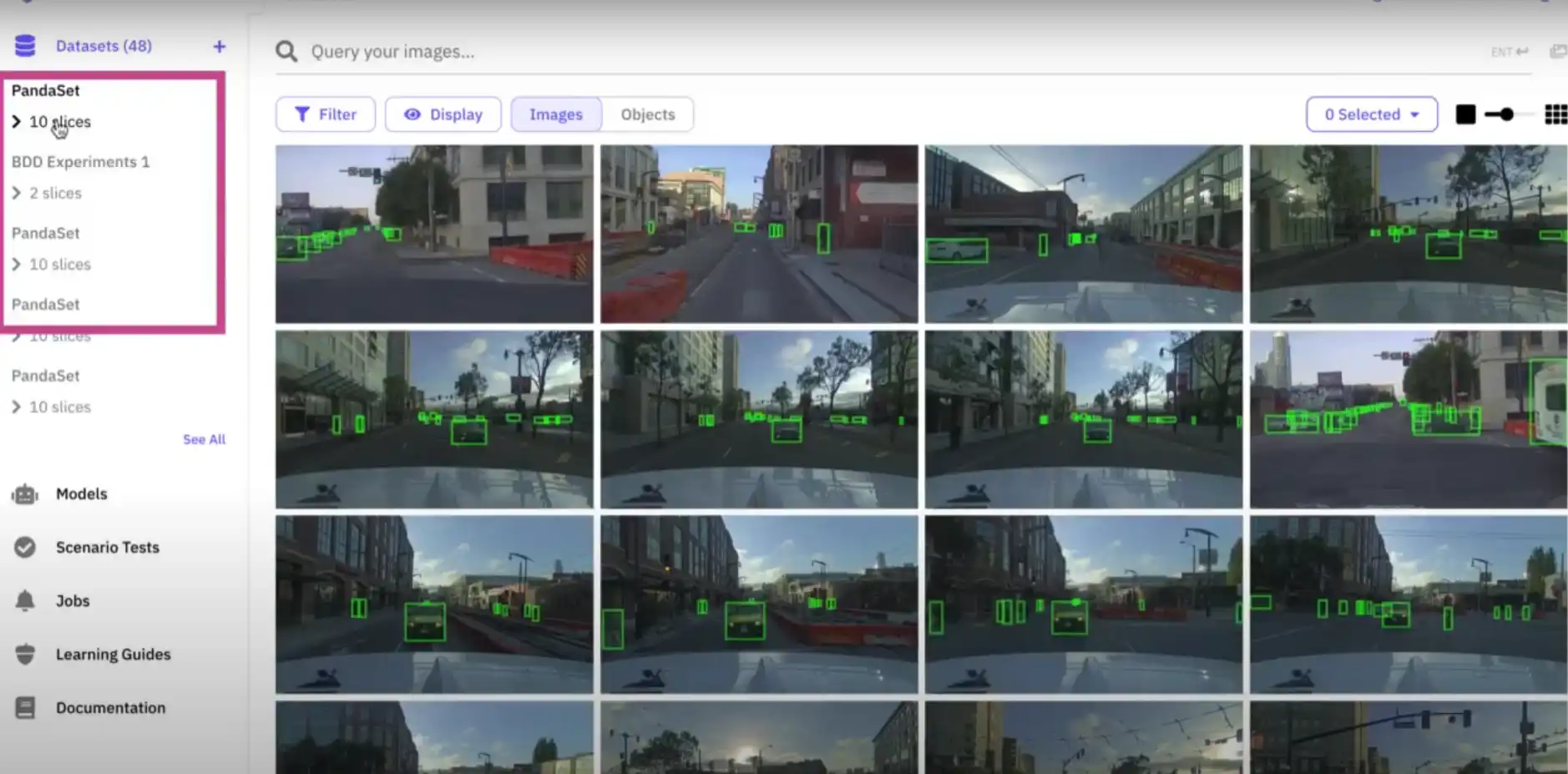
Top Features:
- AI and human-in-the-loop collaboration
- API integration
- Scalable solutions for data processing
Pros:
- High accuracy in data labeling
- Scalable to various industries
Cons:
- Expensive compared to alternatives
- Limited customization options
Pricing: Custom pricing
G2 Reviews Summary: Known for delivering high-quality results, albeit at a higher cost.
5. Dataloop

Top Features:
- End-to-end platform for data management
- Real-time feedback capabilities
- Automation features
Pros:
- Integrated with AI models
- Highly customizable to user needs
Cons:
- Generally expensive
- Steep learning curve for new users
Pricing: Custom pricing
G2 Reviews Summary: Appreciated for its automation and real-time feedback features.
6. Amazon SageMaker Ground Truth
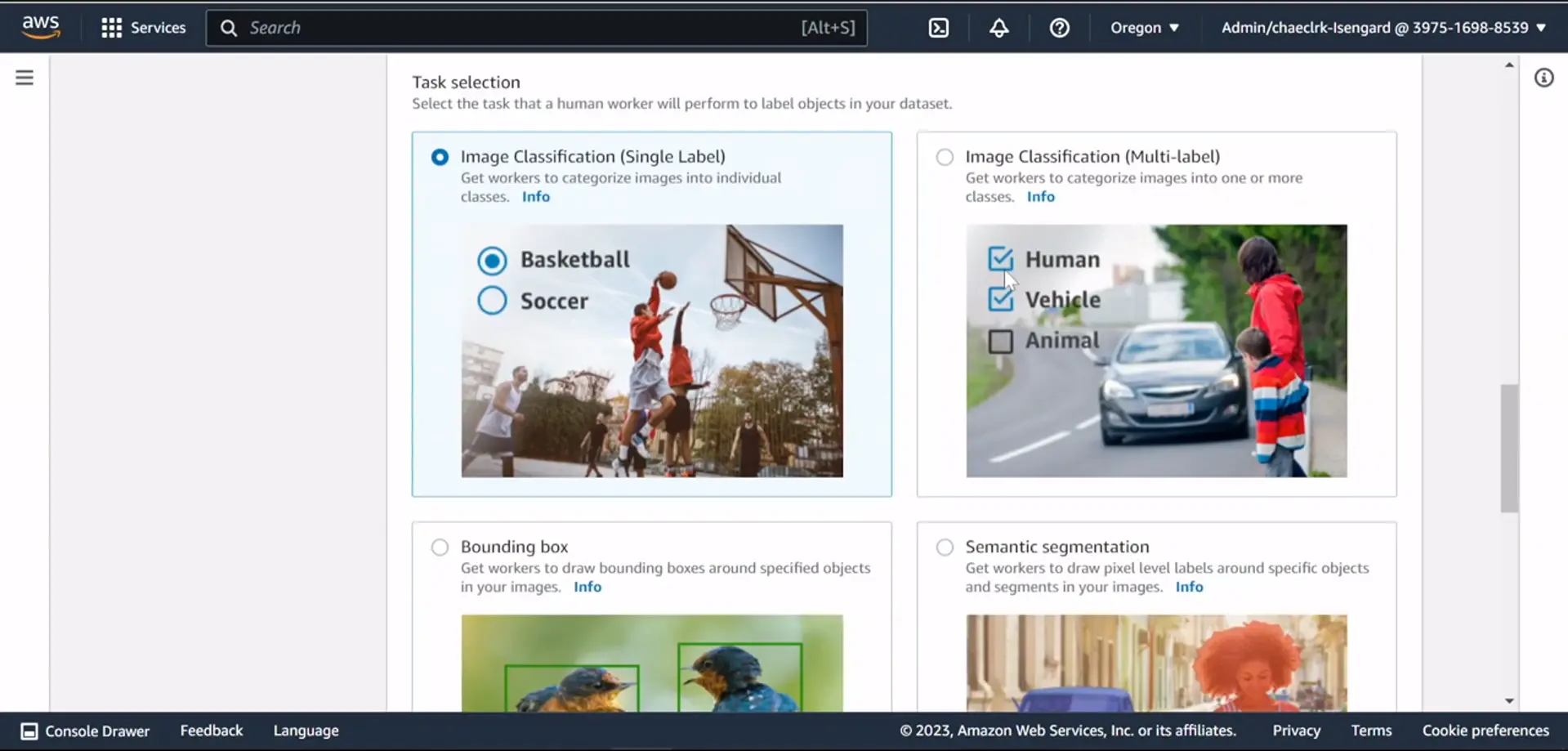
Top Features:
- Pre-built workflows
- Human-in-the-loop annotation
- Integration with AWS services
Pros:
- Excellent AWS integration
- Highly scalable and accurate
Cons:
- Complex setup within the AWS ecosystem
- Limited functionality outside of AWS
Pricing: Pay-as-you-go model
G2 Reviews Summary: Recognized for seamless integration with AWS services.
7. CVAT
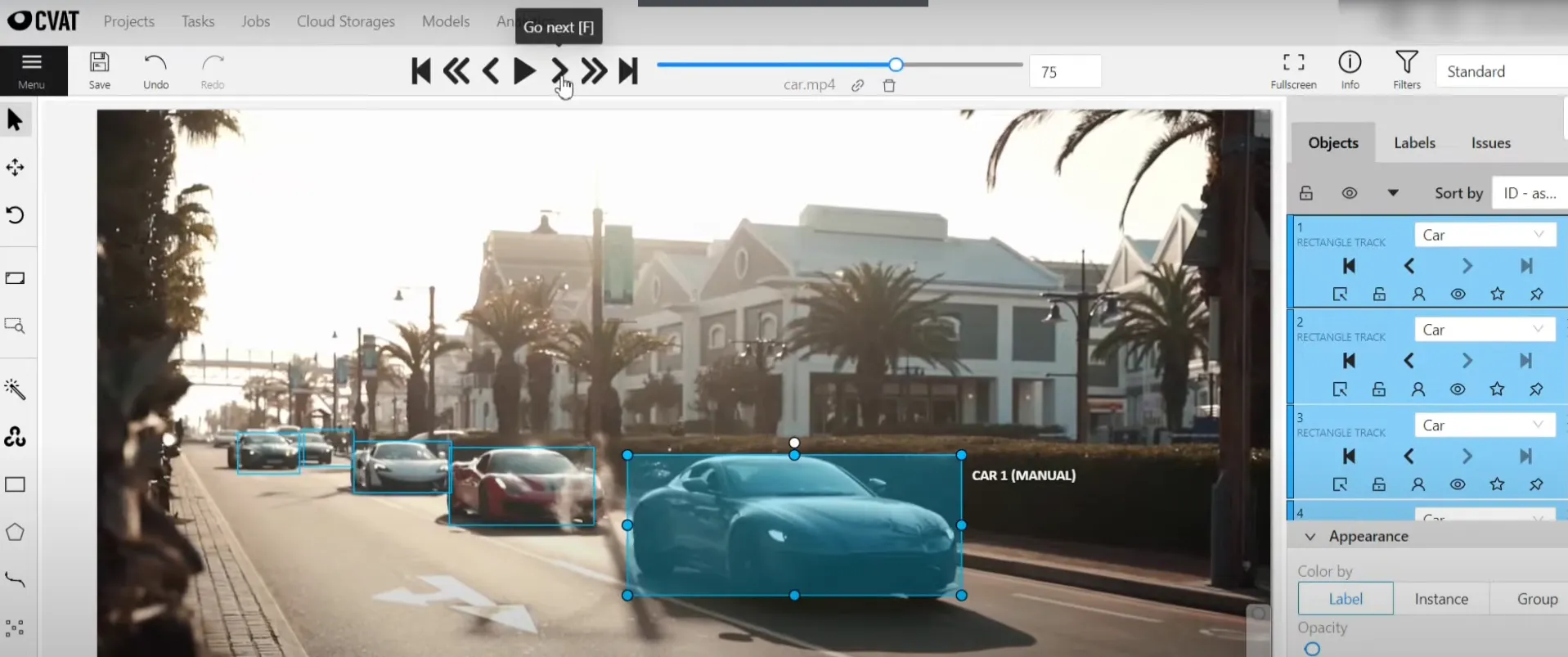
Top Features:
- Open-source annotation tool
- Supports multiple file formats
- Advanced labeling tools
Pros:
- Free to use
- Flexible and versatile for various projects
Cons:
- Limited collaboration features
- Lacks automation capabilities
Pricing: Free
G2 Reviews Summary: Valued for its flexibility and robust computer vision tools at no cost.
8. V7 Labs
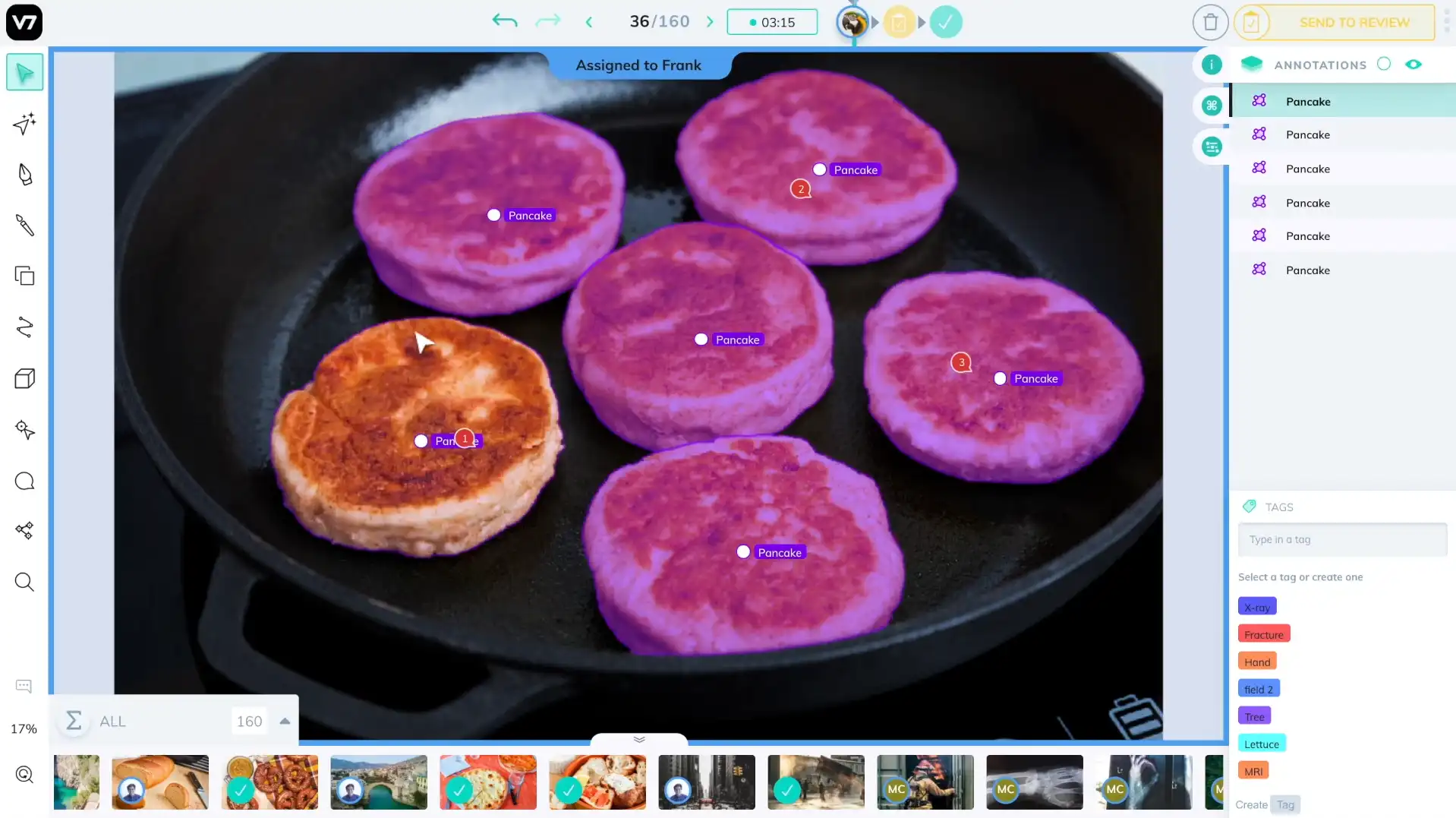
Top Features:
- AI-assisted video labeling
- Real-time collaboration features
- Automation tools
Pros:
- Excellent for video annotation tasks
- Strong collaboration and automation capabilities
Cons:
- Pricey for small teams
Pricing: $300/month; custom pricing available
G2 Reviews Summary: Powerful features, but can be expensive for smaller teams.
9. Diffgram
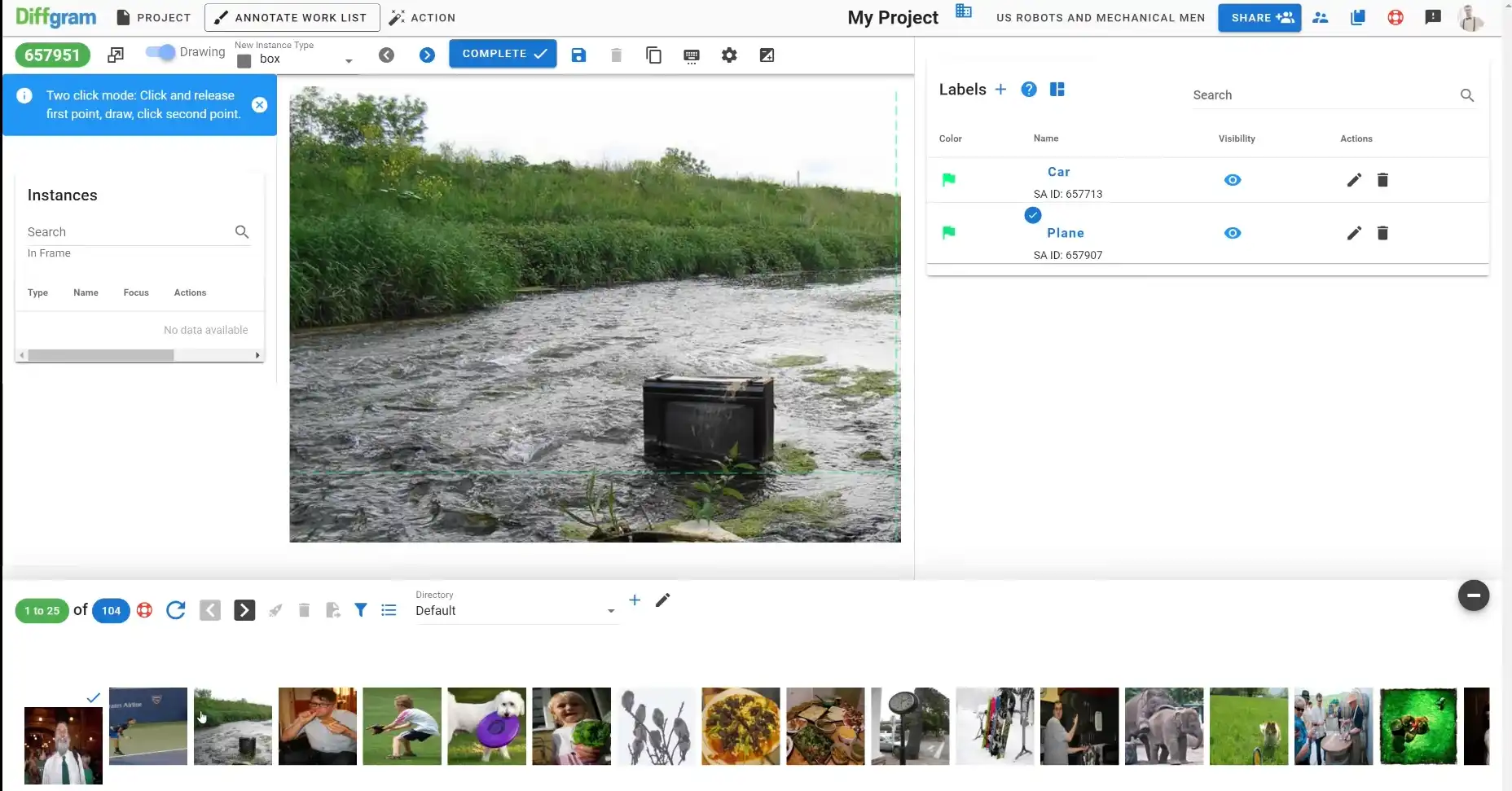
Top Features:
- Full-stack capabilities (annotation, training, evaluation)
- Automation features
Pros:
- Customizable and flexible
- Good collaboration options
Cons:
- Has a learning curve
- Limited features in the free version
Pricing: Free tier available; custom pricing
G2 Reviews Summary: Offers flexible and comprehensive capabilities for users.
10. Clarifai
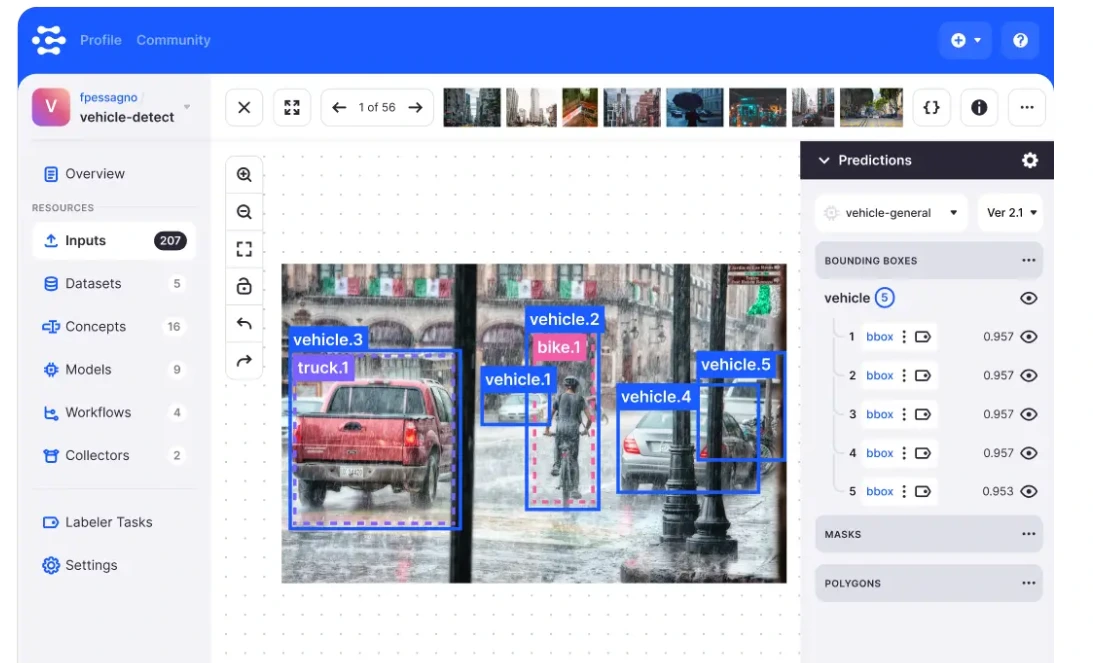
Top Features:
- AI lifecycle management
- Custom model creation
- Supports multiple formats
Pros:
- End-to-end AI solution
- Scalable and automation-friendly
Cons:
- Complex pricing structure
- Limited customization outside its ecosystem
Pricing: Free tier available; custom pricing
G2 Reviews Summary: Strong performance in AI training, though pricing can be complicated.
Conclusion
While all these data labeling platforms offer valuable features, Labellerr stands out as the most comprehensive solution for teams serious about scaling AI development. Our platform combines powerful automation, quality assurance, and flexible workflows in an easy-to-use interface.
Try Labellerr's free plan today to experience how the right data labeling platform can transform your ML workflow. Get started in minutes with no credit card required.
Ready to accelerate your AI projects? book a demo to see our enterprise features in action.
FAQs
1. What is data labeling in machine learning?
Data labeling involves annotating or tagging datasets to help machine learning models learn from the data. It’s essential for supervised learning tasks, where labeled data is used to train algorithms.
2. Why is data labeling important?
Data labeling improves the accuracy and performance of machine learning models by providing context and information. Properly labeled data helps models understand patterns and make predictions.
3. Are these tools suitable for all industries?
Most tools are versatile and can be adapted for various industries, including healthcare, automotive, finance, and retail. However, some tools may have features tailored for specific use cases.
4. Do I need technical expertise to use these tools?
While many tools are designed to be user-friendly, some may require technical knowledge or training, especially those with advanced features or customizations.
5. What makes a good data labeling platform?
A good data labeling platform combines AI-assisted automation, quality control features, team collaboration tools, and flexible workflows. Look for platforms like Labellerr that offer pre-labeling automation and project management capabilities.
6. How can Labellerr save money on data labeling?
Labellerr's AI-assisted labeling reduces manual work by up to 80%. This means fewer annotator hours and faster project completion. Our flexible pricing ensures you only pay for what you use.
7. Is Labellerr suitable for my industry?
Yes! Labellerr's customizable workflows support diverse use cases across healthcare, retail, autonomous vehicles, agriculture, and more. Our platform adapts to your specific labeling requirements.

Simplify Your Data Annotation Workflow With Proven Strategies
.png)


